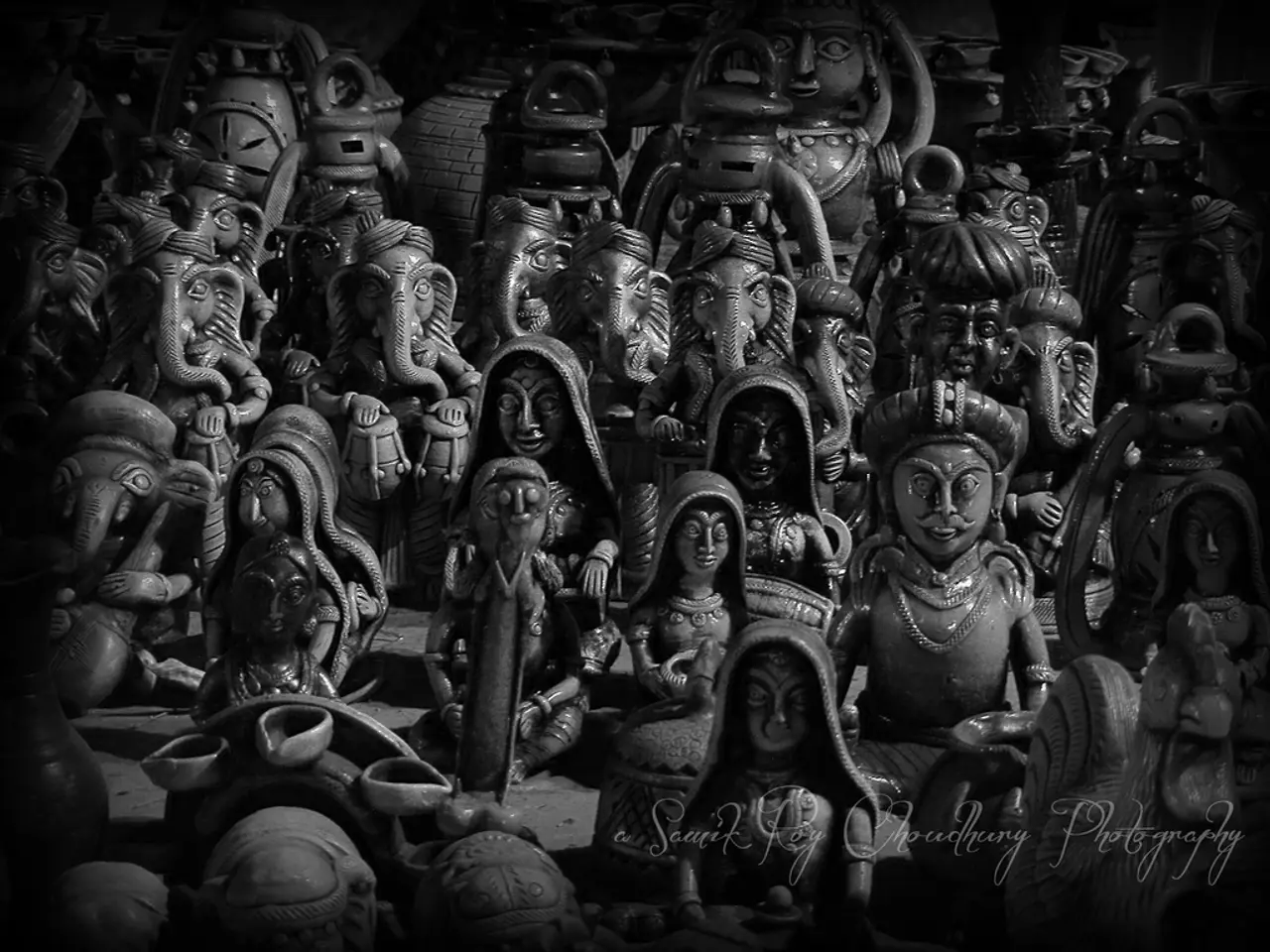Teej Festival Explanation
The Hindu Festival Teej is a significant event in India and Nepal, renowned for its cultural and spiritual significance as it celebrates the divine union of Goddess Parvati and Lord Shiva. This festival embodies marital harmony, love, devotion, and the strength of conjugal bonds.
During Teej, women engage in various rituals, particularly married and unmarried women who pray for marital happiness, their husband's health, or seek an ideal partner. The festivities include fasting (often nirjala, without water), dressing in vibrant colours like red or green, applying henna, singing folk songs, dancing, and visiting temples. The day before Teej, known as Dar Khane Din, women gather to feast and celebrate together.
Spiritually, Teej encourages self-discipline, devotion, and spiritual focus through fasting and worship, while the communal celebrations promote mental well-being and social harmony. It is also linked to the onset of the monsoon season, symbolising renewal and prosperity.
In regions like Nepal's Kathmandu Valley and northern India states such as Rajasthan, Uttar Pradesh, and Madhya Pradesh, Teej is marked by vibrant fairs, folk dances, the swinging of decorated jhulas (swings), and the exchange of gifts known as sindhara — traditional items given to married daughters and daughters-in-law for their prosperity.
Swing rituals are a significant part of Teej celebrations, symbolising joy and nature's rhythm. Hartalika Teej, observed a day before Ganesh Chaturthi, is celebrated mainly in Nepal, Maharashtra, and parts of Bihar and MP. It marks the day Goddess Parvati was taken by her friend into the forest to escape an unwanted marriage.
In conclusion, Teej is both a deeply devotional festival reinforcing spiritual values centered on Shiva-Parvati’s love and a culturally rich celebration emphasising feminine strength, community bonding, and marital bliss in Hindu society.
- Social media platforms are often buzzing with images and videos of women participating in the traditional rituals and vibrant celebrations of Teej, showcasing a glimpse of its cultural travel and lifestyle.
- The health aspect of Teej extends beyond spirituality, as women engage in health-and-wellness practices such as fasting for self-discipline and as a means to improve their well-being.
- Womens-health seminars and discussions can be found during some Teej festivals, promoting awareness and conversations around key health issues affecting women.
- Fashion-and-beauty enthusiasts appreciate the trend of women dressing in bold, traditional Indian attire during Teej, incorporating henna designs and vibrant colors into their lifestyle clothing.
- Embarking on a cultural-travel journey to attend a Teej festival offers not only the chance to experience different travel destinations, but also the advantage of learning about unique traditions, relationship dynamics, and the lasting cultural connection between faith, nature, and women's empowerment.




